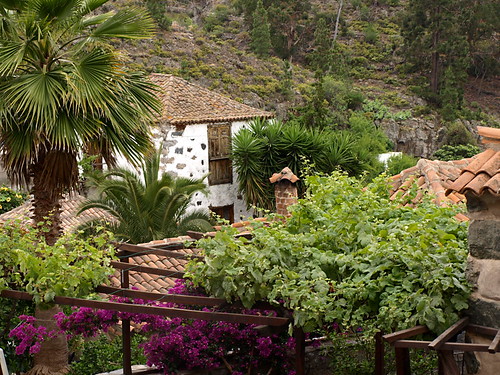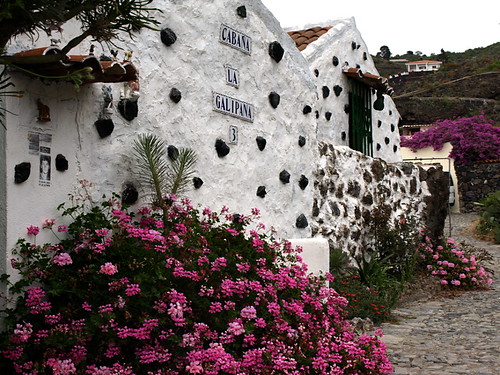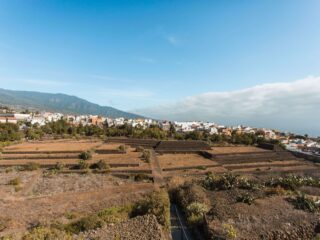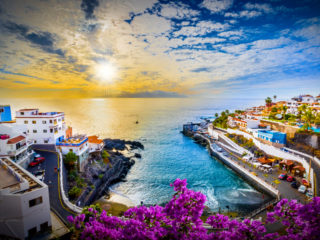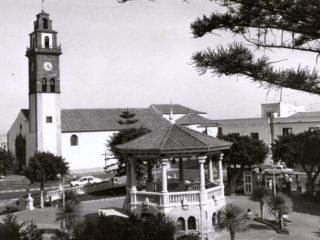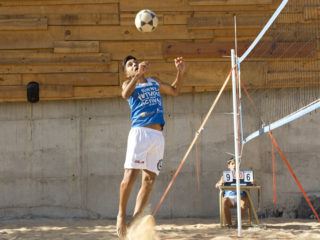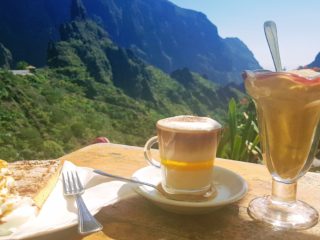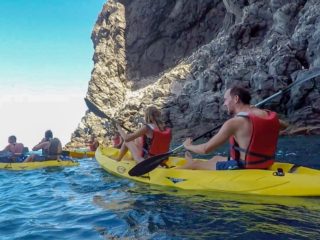There’s no better way to dispel the gloom of mid-winter and the excess pounds of the festive season than by lacing up the walking boots and getting out into the hills and sunshine of Tenerife.
This month we take an excursion away from the sun-soaked beaches of the south west coast to discover the ghosts of a past in the hills above them.
Why walk this way?
An easy bus ride or drive from the coast to GuÃa de Isora, administrative capital of the municipality which includes the resorts of Playa de San Juan, Alcalá and Playa de la Arena, takes you to a different temperature and another world. In the hills behind the town lie the derelict remains of a life that was once very different.
Dotted along the route that joins GuÃa to the pretty hamlet of Chirche, broken kilns are strung out alongside the path like pearls on a necklace, linking fields and threshing circles where once barley, chickpeas, lentils and wheat were sown, cultivated, harvested and threshed to the rhythms of the seasons.
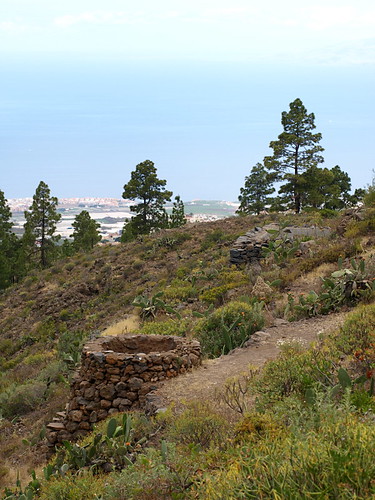 The joy of walking in these hills is to witness the social and economic transformation of the landscape which shifts in world markets and improved water irrigation consigned to the agricultural recycle bin.
The joy of walking in these hills is to witness the social and economic transformation of the landscape which shifts in world markets and improved water irrigation consigned to the agricultural recycle bin.
Cobbled paths which once bore the feet of farm workers to their crops and tile makers to their kilns, now amble between overgrown fields of wild wheat and derelict kilns that fired the tiles of many of the archipelago’s buildings.
Beyond the fields, the pretty hamlets of Chirche and Aripe doze sleepily in the afternoon sun, their cobbled streets lined with quaint farm workers” cottages and their gardens abundant with perfumed roses and crimson geraniums.
Hike this way
Beginning from an anonymous path which breaks away from the busy main road beyond GuÃa’s cemetery, a trail leads gently and steadily uphill past the desert malpaÃs which flanks the town and alongside a flourishing vineyard until it reaches a stone cottage overlooking the hamlet of Aripe.
From here, the path follows the line of broken kilns which punctuate the grassland, their now cold furnace floors home to lizards who scurry between sun and shade.
Agricultural history unfolds as the heads of the wild descendants of wheat and barley whisper and ripple in the threshing circles and overgrown terraces.
Sparrowhawks wheel overhead, scanning the scorched earth for off-guard lizards while the island of La Gomera floats idly on the horizon.
In Chirche, the town’s drinking fountain marks the crossroads for exploration; upwards on a thigh crunching ascent to reach the Mirador de Chirche from where the south west coast is laid out alongside the glittering ocean, downwards for an easy stroll into the village and along the country road to Aripe and back to GuÃa.
Stroll this way
Take a drive along the TF38 from Chio and you’ll pass the Mirador de Chirche where you can enjoy the magnificent views from the comfort of a pretty terrace and a menu. But instead of heading straight back to the car or coach, follow the road downhill for four minutes until you reach a steep path on the right which leads down into Chirche village. Take the trail plunge and find yourself transported from Tenerife to Lark Rise.
Narrow, cobbled streets lined with cottages, hand made signs proclaiming wine or honey for sale and the occasional rural casa where solitude seekers can book a bed, unfurl beneath your feet. Make your way past the fountain and continue down to the pretty plaza and church where you can take five before plucking up the stamina to re-trace your steps uphill to the Mirador.
My way
Peaks: I love the way the arid terrain and its agricultural ghosts gives way to the cottage gardens of Chirche where life has continued in much the same way for generations, regardless of the tourist developments of the coast.
Troughs: GuÃa de Isora isn’t the prettiest of starts and ends to the trail and in an ideal world I would prefer not to begin a hike with a nervous, traffic-dodging five minutes of busy main road. Still, it’s a small price to pay.
My view: 3 Stars ““ A delightful little walk which uncovers secret gems in an area that’s usually reserved for paying overdue taxes and basura bills.
